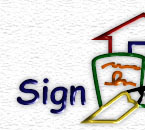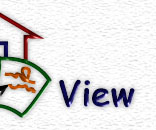Motor behavior is now sure. They enjoy gross motor activities with large objects. Block play usually includes much carrying and lifting, which is as important as the finished product they are building.
Fine motor development has progressed to enable this age child to pick up small objects more easily. In writing with a crayon, the adult grasp is simulated. Movements are still awkward. Sometimes they will pick up the crayon with the nondominant hand and then transfer it to the dominant hand.
Play now goes on with other children. Whereas at two they were involved in parallel play, they now begin to play cooperatively. Play is often structured by the children's imagination.
Language has expanded and the three-year old now has the ability to have fun with language. They like to make up new words and enjoy silly rhyming. They like guessing games. The concept of space and the understanding of place words have developed so that the three-year old can respond to directions which include prepositions, such as "put the ball under the table."
Three-year olds can be induced to respond by using words such as: help, needs, guess what and how about. They like the idea of a surprise and a secret. Compliance is more assured by giving the three-year old a feeling that they have a choice.
Three and one-half is an age of transition developmentally and visually. Children are more sensitive, noncomforming, and anxious in their behavior. Stuttering, eye blinking, faulty eye coordination, and trembling hands of manifestations of motor difficulties.

EXPECTATIONS OF FOUR-YEAR OLDS
Four is not an easy age for children. They are considerably more powerful than at the age of three; language is developing very rapidly; time sense is increasing; and they can identify with a larger social group. They are self-sufficient in many of their personal needs. This leads many adults to think they can perform on a high level at all times. When they retreat temporarily to needing help, or when they are suddenly defiant, it may be that they are exhibiting a persistent need to experiment and test others. At four they have not learned all they need to know about the ways of their own world, or about other children or adults. Consequently, they still require acceptance of feelings and help with limits, just as they did at age three, but always with due recognition of their increased growth.
The four to five year old seeks to satisfy curiosity through a discovery process. A school learning environment arranged with centers allows the freedom and materials to provide for individual and group learning. Each child should be provided with opportunities to create, explore, discover, and experiment through their own experiences to enable them to find their own unique place in the world..

EXPECTATIONS OF FIVE-YEAR OLDS
Five to six-year old children think in concrete terms, therefore, they need concrete experiences in the learning environment. They have a special need to experiment and discover things that can be related to their own experiences and the world around them. Expression through movement and music is necessary for growth. Dramatic and rhythmic activities are especially appropriate for the 5 to 6 year old.
This age child is interested in creative expression through language by the introduction of sounds, letters and words. They enjoy learning games that give them opportunities to tell stories, read books through memory, and write language experience stories.
The self-assuredness of the five-year old is no longer the characteristic of the five and a half-year old who is said to be restless. During this period the child is in a more-or-less constant state of emotional tension. Many difficulties arise out of an inability to shift and to modulate behavior. Teachers can help guide this behavior by planning a smooth transition time when changing from one activity to another.

PRIORITY ACADEMIC STUDENT SKILLS
- By the end of the school year, the child will:
- By the end of the school year, the child will:
- By the end of the school year, the child will:
- By the end of the school year, the child will:
- By the end of the school year, the child will:
- By the end of the school year, the child will:
- By the end of the school year, the child will:







| Art Activities | Craft Recipes | Holiday Activities | Math and Science Activities | Nutrition and Recipes | Rhymes and Fingerplays | Social Studies and Motor Activities | Self-Concept Activities |
| Awards this page has won!!! | Expectations of 3, 4, and 5 year olds | Gardner's Theory of Multiple Intelligences | Other links of interest | Teacher Poems | Teacher Tips | Alphabet and Number Activities |